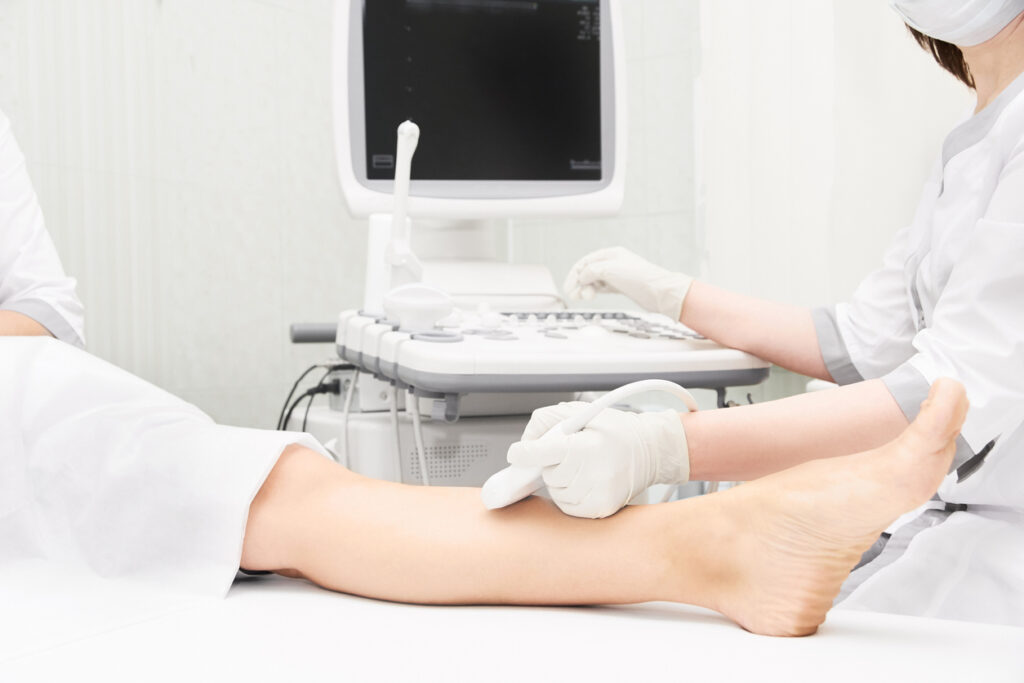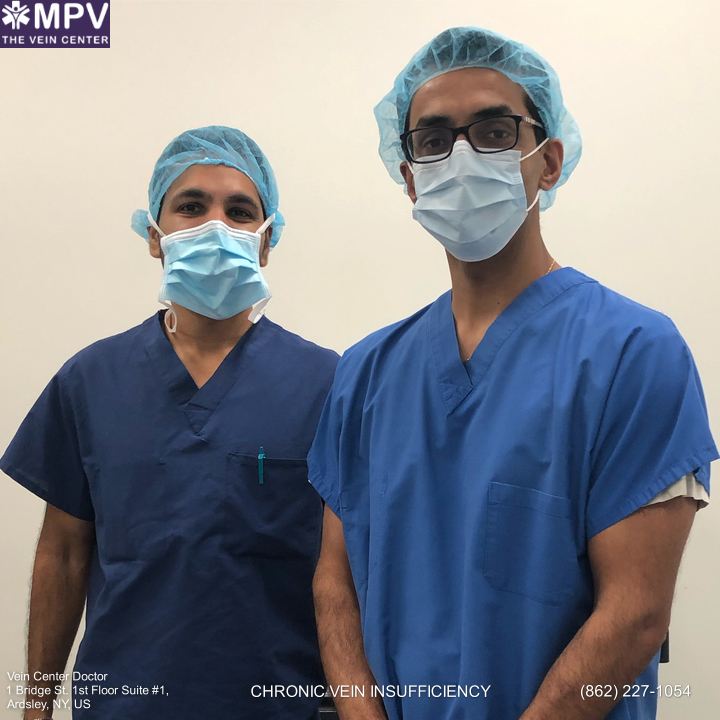The concept that everything is interconnected in nature may be considered true, as a common condition may be linked with another: the increased cholesterol levels being a risk factor for heart attack. However, it's also true that there always exists an exception to the rule, especially when there's not enough proof of their connection.
So can chronic venous insufficiency cause intermittent periods of very high blood pressure? There's enough medical evidence saying that labile hypertension, the medical term for intermittent periods of very high blood pressure, may be caused by disorders in autonomic regulation and psychiatric conditions like anxiety and depression. Meanwhile, chronic venous insufficiency causes a sequela of conditions when untreated, but none of them include labile hypertension.
Living with unwanted veins is a thing of the past, when you can simply schedule a free consultation with Vein Center Doctor and find your ideal solution today.
Labile hypertension is the medical term for intermittent periods of very high blood pressure, characterized by blood pressure measurements of systolic blood pressure of 130 and above and diastolic blood pressure of 80 and above.
It's characterized by an acute episode of fluctuations in an individual's blood pressure measurements, alternating between high blood pressure to a drop in blood pressure to normal baseline level, along with symptoms such as heart palpitations, headache, and dizziness.
Labile hypertension is a vascular disease commonly associated with disorders in autonomic regulation such as baroreflex failure, where the baroreflex input that helps stabilize blood pressure is prevented from traveling from the carotid sinus to the nucleus tractus solitarii. Psychiatric conditions like anxiety and depression are pointed as causes as well.
Relevant evidence also points to other cardiovascular and non-cardiovascular risk factors that may contribute to the development of labile hypertension including a clinical history of high salt intake, excessive alcohol use and use of tobacco products, substance abuse, certain medications like decongestants and eye drops, and non-compliance to anti-hypertensive medications.
Chronic venous insufficiency isn't included in any list pointing to the contributory factors to labile hypertension.
Although it's not a medical emergency, chronic venous insufficiency is a cardiovascular disease that must be managed as early as possible. This is because untreated chronic venous insufficiency is characterized by a sequela of noticeable symptoms and complications.
Poor blood flow in the blood vessels leads to chronic venous insufficiency. These complications ultimately result in venous ulceration and in some rare cases, tissue changes that lead to health conditions like ankle joint stiffness, fixed plantar flexion, and periostitis.
Loss of cosmetic appeal is one of the most common reasons why patients seek treatment for chronic venous insufficiency. This vascular disease produces an unsightly appearance in the legs attributed to visible veins that people, most often women especially when they want to wear skirts, want to conceal.
Common problems in cosmesis associated with chronic venous insufficiency include:
A wide variety of vascular pain profiles have been reported by patients. These include leg pain and discomfort that may be described as full or heavy, dragging or aching, or frank pain. Throbbing and itching may also be associated with the severe pain experienced that's exacerbated by standing.
Pain and discomfort are said to not be associated with the size of the affected blood vessels but with gender and individual perception with regards to their pain threshold.
Objective evidence must be collected to sufficiently differentiate patients with lower extremity edema caused by varicose veins from patients with lymphedema. This is because the latter is caused by a blockage in lymphatic drainage and entails a difference in treatment than peripheral edema caused by varicose veins.
Clinical suspicion for edema caused by varicose veins must be done if the edema is pitting. Meanwhile, non-pitting edema often described as "brawny edema" raises the clinical suspicion for lymphedema.
In superficial thrombophlebitis, veins are inflamed and blood clots may also form. It differs from deep vein thrombosis in that the affected veins in this condition are only superficial) whereas the affected veins in DVT are deep veins, with the blood clots possibly traveling to other parts of the body leading to pulmonary embolism.
Hemorrhage or bleeding of the dilated varicosities results from the local trauma that superficial thrombophlebitis makes the patient more vulnerable in, although spontaneous bleeding may occur as well. Patients may not be aware of the rupture of their blood vessels, although warning signs include feeling faint and blood trickling down their legs.
Skin changes are also a cause of concern for patients with chronic venous insufficiency, not only because of cosmetic reasons but because they think it may be a sign that their condition is worsening. Some of these skin changes include:
Other complications associated with chronic venous insufficiency stem from the tissue damages incurred due to poor nutrition and oxygenation associated with the disorder. These complications include the following:

The diagnosis of chronic venous insufficiency may be done by looking at the characteristic signs and symptoms of the disorder. The extent of etiology and anatomy of the disorder necessary for categorizing this disorder in CEAP classification may also be done through non-invasive and invasive means.
Non-invasive means of visualizing and confirming the diagnosis of CVI include:
Similarly, invasive means of visualizing and confirming the diagnosis of CVI include:
Find exactly what you need to get rid of your vein-related problems. Dr. Sood and the rest of our team at Vein Center Doctor are ready to help: schedule your free consultation today.
There are various ways available to treat patients with chronic venous insufficiency. These techniques include conservative management, outpatient vein treatments, and surgical procedures. The choice of which treatment procedure to undergo depends on patient preference and the need to address the issues at hand.
Conservative management entails the use of non-invasive methods to manage the symptoms of chronic venous insufficiency and prevent the worsening of the disease.
Drugs with venoactive properties have been widely used in Europe although they're still not approved in the United States, which work by improving venous tone and capillary permeability. These drugs include coumarins (α-benzopyrenes), flavonoids (γ-benzopyrenes), saponosides (horse chestnut extracts), and other plant extracts.
Emphasis should also be given to lifestyle change since obesity is one of the risk factors noted to cause CVI and its complications. Regular exercise must be encouraged to help maintain ideal body weight and for the improvement in the abnormalities in calf pump function.
Surgical treatment for chronic venous insufficiency may be considered if the patient doesn't respond to medical and endovenous therapy, especially when chronic, non-healing ulcers have already manifested.
Those with poor compliance with conservative management and compression therapy may also consider surgical treatment. Surgical procedures for the management of chronic venous insufficiency include:
There's no correlation between labile hypertension and chronic venous insufficiency. This is evidenced by the lack of studies pointing towards an association between the two. However, despite being separate entities, it's best to still address the two, especially chronic venous insufficiency which has many associated complications.
We at Vein Center Doctor help our patients by alleviating the symptoms associated with a chronic condition of disorder in the deep vein that is chronic venous insufficiency. These include radiofrequency ablation, endovenous laser treatment, sclerotherapy, VenaSeal closure system, and compression therapy.
Radiofrequency ablation involves the use of radiofrequency to close off incompetent veins by destroying their endothelium or its inner lining through the delivery of a radiofrequency via a catheter with heating tip. This will result in the redirection of blood flow from the dilated veins into the healthier veins. Its safety and efficacy profiles are ensured by its status of FDA approval.
Employing the same principle as radiofrequency ablation, ndovenous laser treatment aims to close the incompetent veins by destroying their endothelium to prevent the reflux of veins. It differs, however, to radiofrequency ablation in that instead of radiofrequency, it delivers laser fiber with wavelengths of 810-nm or 940-nm to form the scar tissue that facilitates the closure of the incompetent veins.
Sclerotherapy entails the delivery of sclerosing agents such as 23.4% sodium chloride, sodium tetradecyl sulfate, and sodium iodide for the treatment of chronic venous insufficiency. Sclerosing agents serve as irritants of the veins, in that delivery of these chemical agents lead to the inflammation and formation of a fibrotic tissue that cause the closing off of incompetent veins. Sclerotherapy has 2 types, namely liquid sclerotherapy and ultrasound-guided foam sclerotherapy.
The VenaSeal closure system is a minimally-invasive technology that involves the use of a delivery catheter and delivery gun to deliver the VenaSeal adhesive. The pattern of delivery starts first with flushing using saline solution, followed by delivering an aliquot of VenaSeal adhesive every 3 seconds and every 3 cm.
Compression of the area delivered with VenaSeal adhesive is then done, followed by placing a bandage on the insertion site. This procedure is also guided with an ultrasound, which helps locate the access site and help visualize the delivery of the VenaSeal adhesive.
Compression therapy in patients with chronic venous insufficiency is the most often prescribed treatment and is dubbed as the standard of care when it comes to the management of chronic venous insufficiency and chronic venous ulcers.
This therapy entails the use of garments such as compression stockings to provide graded external compression and prevent the fluid retention brought by the hydrostatic forces of chronic venous insufficiency.

While there's no correlation between chronic venous insufficiency and labile hypertension, it's still best to treat chronic venous insufficiency to avoid the complications associated with the said venous disease if left untreated.
At Vein Center Doctor, we offer medical treatment options that cater to the needs and preferences of the patient. This is through expert health care providers offering the best vein care of patients headed by Dr. Rahul Sood. Experience the best outpatient vein treatments today and schedule your free consultation.
Find exactly what you need to get rid of your vein-related problems. Dr. Sood and the rest of our team at Vein Center Doctor are ready to help: schedule your free consultation today.
Most Insurance is accepted for treatment